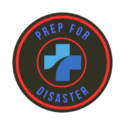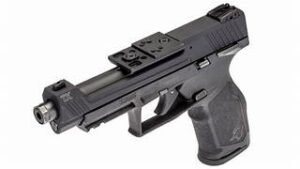In this unpredictable and chaotic world, it’s more important than ever to be prepared for any potential disaster or emergency. Enter the bug out bag—a carefully curated survival kit designed to sustain you when all else fails.
Table of Contents

But what exactly is a bug-out bag, you ask? When disaster strikes, it’s its lifeline, packed with the essential items to help you survive when the world around you crumbles.
This bag has your back, from food and water provisions to vital tools and equipment, so let’s go deep into the rabbit hole of bug out bags and learn how to build the ultimate survival kit.
Why Do You Need a Bug Out Bag?
Relying on luck alone is a fool’s luck in disaster, while a bug-out bag embodies self-reliance and preparedness, allowing you to weather any storm.
Unforeseen circumstances like hurricanes, earthquakes, and civil unrest can leave us stranded without warning. But with a bug out bag, you can confidently navigate these crises.
Assessing Your Needs
Before you start throwing random items into your bug-out bag, take a moment to assess your specific needs:
- Geographical Location: Are you prone to flooding, wildfires, or earthquakes?
- Duration: Are you preparing for a 72-hour emergency or long-term survival?
- Number of People: Is this bag just for you, or do you need to consider family members?
- Special Requirements: Medications, dietary restrictions, and personal preferences must also be considered.
Choosing the Right Bag

Selecting the right bag is the foundation of your bug-out bag. It must be durable, comfortable, and spacious enough to fit all your essentials. Key considerations include:
- Durability: Opt for materials like nylon or canvas.
- Capacity: 30 to 50 liters is ideal for most situations.
- Comfort and Fit: Padded shoulder straps and a hip belt will help distribute weight evenly.
- Organization: Multiple compartments and pockets are essential.
Essential Bug Out Bag Items
Water and Hydration
- Water Containers: Durable stainless steel or BPA-free plastic.
- Water Filters: Portable filters and purification tablets.
- Hydration Strategies: Plan for at least one gallon of water per person daily.
Nourishment and Food Supplies
- Non-perishable foods: Energy bars, dehydrated meals, jerky, and nuts.
- Meal Planning: Consider calorie requirements and meal frequency.
- Cooking Gear: Lightweight camping stove, mess kit, and utensils.
Shelter and Warmth
- Shelter Options: Lightweight tents, tarps, or emergency blankets.
- Sleeping Gear: Sleeping bags rated for low temperatures and insulated sleeping pads.
- Fire-Starting Tools: Waterproof matches, fire starter kits, or lighters.
First Aid and Medical Supplies
- First Aid Kit: Bandages, antiseptic wipes, gauze, and tweezers.
- Medications: Personal prescriptions, pain relievers, and allergy medicine.
- Specific Health Needs: EpiPens, inhalers, and diabetic supplies.
Appropriate Clothing for All Weather Conditions
- Layered Clothing: Base layers, fleece, and waterproof jackets.
- Footwear: Sturdy, waterproof boots.
- Accessories: Gloves, hats, and socks suitable for different climates.
Personal Hygiene and Sanitation
- Hygiene Items: Soap, toothpaste, toothbrush, and toilet paper.
- Waste Disposal: Biodegradable bags.
- Grooming Tools: Combs, mirrors, and nail clippers.
Personal Documents and Identification
- Identification Papers: Passport, driver’s license, credit cards.
- Legal Documents: Property deeds, leases, and medical records.
- Cash: Emergency funds in small denominations.
Self-Defense and Protection
- Non-Lethal Options: Pepper spray or stun guns.
- Firearms: Ensure you have proper training and permits.
- Melee Weapons: Tactical knives or multi-tools.
Miscellaneous Essentials
- Navigation: Maps, compasses, and GPS devices.
- Tools and Equipment: Multi-tool, duct tape, and paracord.
- Lighting: Flashlights, headlamps, and spare batteries.
Maintaining and Updating Your Bug Out Bag

A bug-out bag is not a one-time project. Regular inspection and updates are required to remain functional.
- Rotate Perishable Items: Check expiration dates on food, water, and medications.
- Inspect Gear Condition: Ensure zippers, straps, and compartments are intact.
- Stay Informed: Adapt your bag to changing threats and circumstances.
Developing a Survival Mindset
A strong survival mindset is just as important as physical preparation.
- Mental Preparedness: Practice staying calm in high-stress situations.
- Basic Survival Skills: Learn fire-starting, navigation, and self-defense techniques.
- Adaptability: Be ready to modify your plans based on the situation.
Conclusion – The Ultimate Bug Out Bag
Your bug-out bag is your lifeline in times of crisis, but it’s as effective as your preparation and mindset. By thoughtfully assembling and maintaining your bug-out bag and cultivating a strong survival mentality, you’ll be ready for any challenge that comes your way.
Disclosure: Our website contains affiliate links, which means we may receive compensation if you purchase from websites we recommend. We test and review these products independently, and we do not accept free products or incentives in exchange for positive reviews. Any opinions expressed here are our own.



